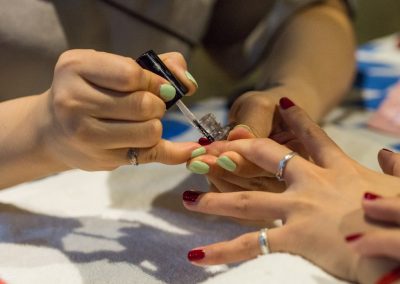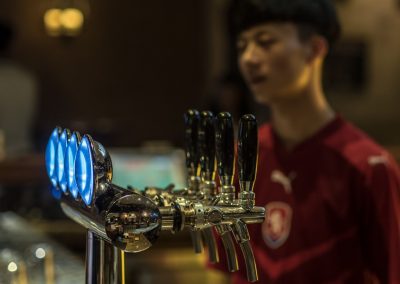To flash or not to flash, that is the question.
I was recently asked to do an assignment for a local bar to photograph the European cup and atmosphere. Bars have low and mixed lighting sources, making colour balance and uniform lighting difficult. Not having seen the venue, I went armed with my Olympus FL-600 on-camera flash, two Yongnuo manual flashes and radio triggers, and two camera bodies: The OM-D-E-M5 MK1 and 2. On the MK1 I had the 12-40 f 2.8 pro and on the MK2 I had the 45mm f1.8.
On camera flash can be either too harsh, especially for people closer, or have “fall-off” if the area of interest is too large like, say, a large room, especially with high and/or dark ceilings. Flash can be bounced from a white surface, ceiling or wall, to ‘diffuse’ the light if available. Did I need the more powerful Yongnuo manual flash, or would the Olympus TTL-Auto be enough?
For this job, the faster 1.8 lens gave me enough light for shots without flash, but the f2.8 struggled a little, especially if there was movement. So, a combination of the 1.8 without and the 2.8 with was was used, with me adjusting/bouncing the flash as required for each shot to get a balance that would be easy to manage in post production. As it turned out, the very capable FL-600 Olympus flash never let me down, and in fact I often had to reduce the power in-camera. Impressive: especially as I was using a 360 degree Gary Fong Lightsphere diffuser to even the light across the subjects.
Careful attention to the light on each shot with a shoot-check-shoot process enabled me to mix the two and take shots that required very little post-production adjustments. The natural yellow light of the no-flash pictures can be eliminated in post, but then the atmosphere of the evening and bar-light is missing, so best left as-is. Having two bodies, as usual, is a must for events like these.
I’m pleased to say the customer was very happy with the results and they have a range of promotional photos that are useful beyond the event I was photographing.
In summary, the use and type of flash very much depends on the environment, the lenses available, and the desired effect. You can see that the flash-lit shots are fine, but they are less atmospheric in my opinion. The photos without flash are displayed first, followed by those with flash.
I prefer natural light, but there’s no doubt the flash was needed for the more active shots, especially at each exciting moment of the match where people jump around and wave in anguish/anger/excitement or pure joy!
























